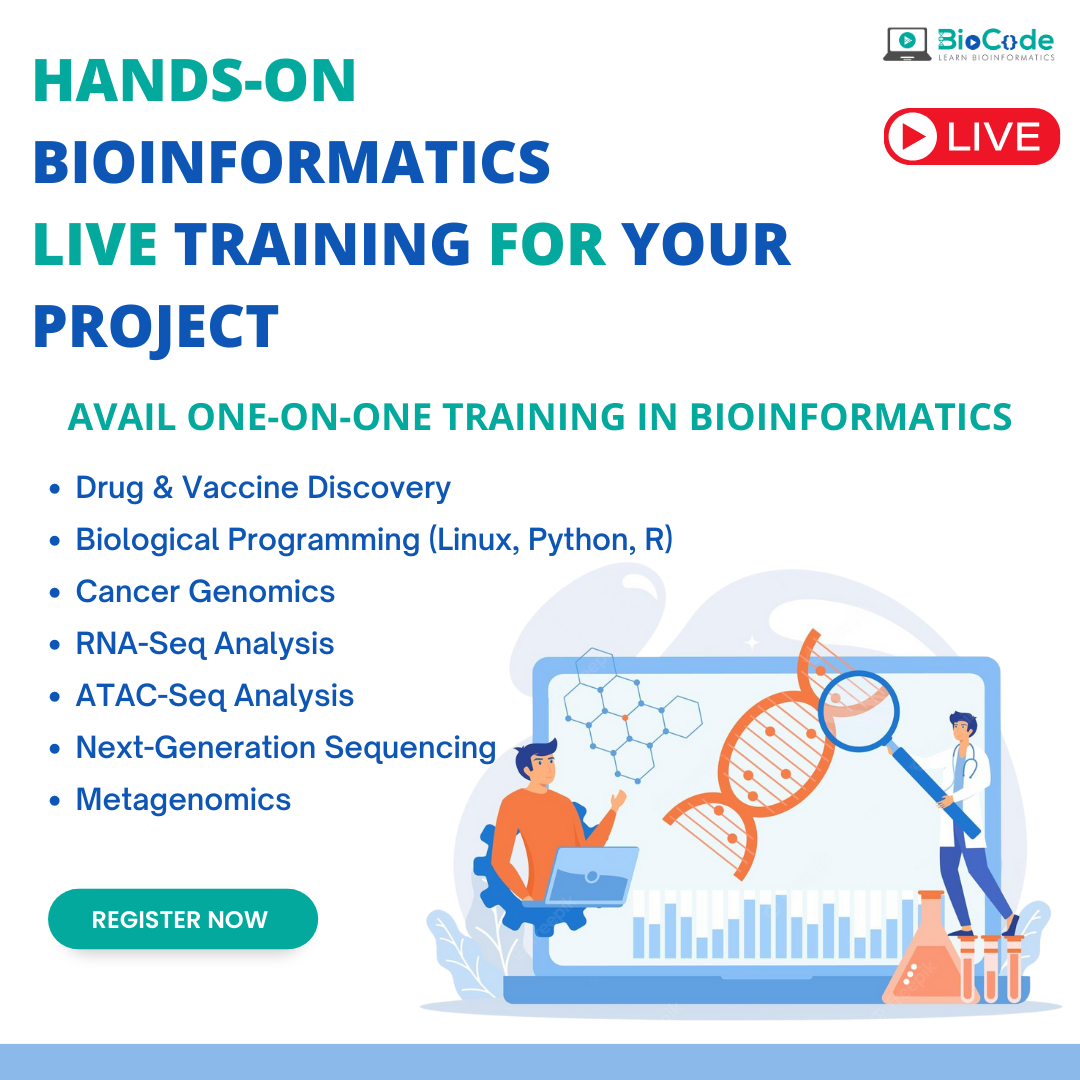6 Easy Facts About Bioinformatics Tutor Described
6 Easy Facts About Bioinformatics Tutor Described
Blog Article
Unknown Facts About Bioinformatics Tutor
Table of ContentsThe Bioinformatics Tutor StatementsThe Only Guide for Bioinformatics TutorFacts About Bioinformatics Tutor UncoveredSome Known Questions About Bioinformatics Tutor.10 Simple Techniques For Bioinformatics Tutor
Of the total amount individuals entailed in the training, 80% were trainees from public college institutions, while the remaining 20% originated from exclusive organizations. To get approved for a certificate of participation, pupils were called for to go to at the very least 90% of the overall training hours. As a result of this need, an impressive 95% of the participants successfully obtained their certificates, having not only fulfilled the minimum presence standards but additionally finished all assigned activities throughout the training.
Throughout the height of the COVID-19 pandemic, particularly between June and August 2020, the job team was entrusted with organizing specialized training in bioinformatics. This training was specifically focused on pupils from the research study group Center for Research in Applied Computing at the Federal College of Pará (UFRA) The adaptation to remote learning platforms as a result of the pandemic created a chance to explore brand-new teaching methods and digital tools that improved both reach and effectiveness.
This course was made to supply an obtainable yet detailed summary of Artificial Knowledge methods, particularly as applied in bioinformatics (Bioinformatics Tutor). This digital style enabled engagement from trainees across Brazil, several of whom may not have had the opportunity to go to in-person sessions.
Bioinformatics Tutor Things To Know Before You Get This
Around 50% of the overall training hours were devoted to sensible tasks where pupils constructed smart versions and applications in an array of clinical domain names, consisting of genes, molecular biology, and ecological information analysis. These systems allowed trainees to engage in real-time information control, version training, and formula experimentation.
Sixty of them were affiliated with various higher education and learning establishments in the state of Pará, while the staying twenty came from institutions situated in five other Brazilian states. By introducing Artificial Intelligence in a practical and pertinent context, the initiative served to bridge the void between concept and real-world application, supplying students with a strong foundation for future study or employment in the area.
The training initiative created part of a more comprehensive academic outreach initiative known as the Bioinformatics when traveling project. This job has, throughout the years, presented dozens of pupils to the world of bioinformatics and computational biology. The events held under this umbrella campaign have occurred throughout several areas and years, as summarized in Table 1 (Listing of occasions, locations, years, and overall varieties of students and trainers)
Several of these groups, originally brought together by their participation in training events, have considering that gone on to generate independent clinical research study in cooperation with neighborhood scholastic organizations. The training not just promoted scientific thinking within the context of bioinformatics but also sparked collaborative relationships that expanded past the training setting.
The Single Strategy To Use For Bioinformatics Tutor
The very same team, omitting IH and RR, also acted as tutors for the functional training modules. Funding for the task was provided with the give 88887.200562/ 2018-00 from CAPES.
The Federal University of Pará's Workplace of Study (PROPESP/UFPA) likewise gave financial backing, especially for the production of the last manuscript. The writers declare no industrial or economic disputes of passion that could have influenced the research study. Furthermore, all viewpoints and analyses expressed in this post are only those of the authors and do not necessarily show those of their corresponding establishments, the publisher, editors, or reviewers included in the magazine procedure.

The Ultimate Guide To Bioinformatics Tutor
From a pedagogical viewpoint, the training strategy made use of in the training was purposefully interactive. Courses were performed in a way that urged trainee involvement and discussion, going past rote memorization to check out exactly how ideas are created, used in go to my site day-to-day live, and evaluated in academic setups. The instructional viewpoint concentrated on nurturing both strong and struggling pupils, supplying customized assistance, and building confidence via sustained mentorship and patience.

Each team, including approximately 36 participants, was sustained by 3 mentors-- most of basics whom were postdoctoral scientists with customized knowledge. These mentors not just aided develop the group projects but additionally promoted their execution, ensuring that each study concern was both suitably difficult and relevant. The objective was to supply a biologically realistic context that individuals could discover with open-ended objectives and accessibility to curated datasets.
For additional understandings into the technique and outcomes of this project-based knowing strategy, visitors are routed to S1 Text, which consists of detailed descriptions of the pedagogical structure, evaluation methods, and project motifs utilized in the training sessions.
The 2-Minute Rule for Bioinformatics Tutor
Of the total amount participants entailed in the training, 80% were trainees from public greater education and learning institutions, while the staying 20% came from exclusive institutions. To certify for a certification of participation, students were needed to go to at the very least 90% of the total training hours. Significantly, past the pupils that enlisted in the training sessions, seven experienced trainers took part in supplying the training courses, while 3 specialized research study professors collaborated the general training process. Roughly 50% of the overall training hours were devoted to sensible tasks where pupils constructed smart versions and applications find out here now in a range of clinical domain names, consisting of genes, molecular biology, and environmental data analysis. The training not only fostered clinical reasoning within the context of bioinformatics however also sparked collaborative connections that extended beyond the training setting.
Report this page